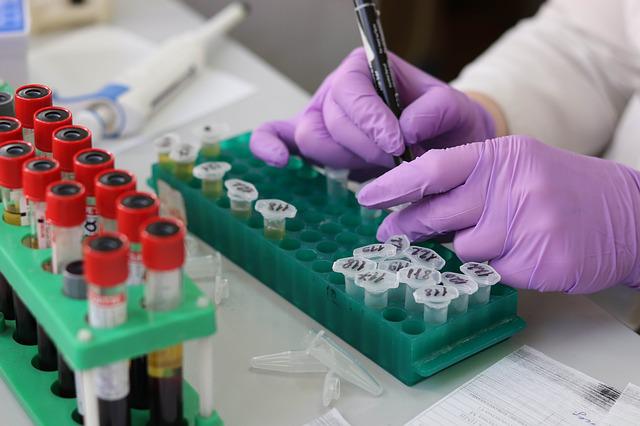Test Amit sep
Antimicrobial resistance (AMR): overuse and misuse of antimicrobial drugs a global health and development threat

The term "ESKAPE pathogens" refers to a group of six drug-resistant bacteria that are considered a major threat to public health due to their ability to evade the effects of antibiotics. The name "ESKAPE" is an acronym that stands for:
- E. coli
- S. aureus (including methicillin-resistant Staphylococcus aureus, or MRSA)
- K. pneumoniae
- A. baumannii
- P. aeruginosa
- Enterococcus species (including vancomycin-resistant Enterococcus, or VRE)
Antimicrobial resistance (AMR) refers to the ability of microorganisms, such as bacteria, viruses, fungi, and parasites, to resist the effects of antimicrobial drugs that were once effective in treating infections. This means that infections caused by these resistant organisms can persist and spread, leading to increased morbidity and mortality. AMR is a global public health threat that can limit our ability to treat infections and perform medical procedures.
The overuse and misuse of antimicrobial drugs, such as antibiotics, contribute to the development and spread of AMR. Addressing AMR requires a multi-faceted approach that includes reducing the unnecessary use of antimicrobial drugs, developing new treatments, and promoting infection prevention and control measures.
Antimicrobial resistance (AMR) is a global concern for several reasons:
Public health impact: AMR can lead to increased morbidity and mortality from infections that were previously treatable. This can result in more extended hospital stays, higher healthcare costs, and more frequent need for medical intervention.
Spread of resistance: Resistant organisms can spread easily across borders and continents, making it a global problem that requires a coordinated response.
Limitation of treatment options: AMR can limit the effectiveness of available treatments, making it difficult or impossible to cure certain infections.
Economic impact: The rise of AMR can lead to increased healthcare costs, decreased productivity, and decreased food security.
Threat to medical procedures: AMR can make it difficult to perform medical procedures, such as surgeries and transplants, that rely on antimicrobial drugs to prevent and treat infections.
Therefore, AMR poses a significant threat to global public health and requires ongoing efforts to prevent, detect and control the spread of resistant organisms.
Drug resistance in bacteria
Drug resistance in bacteria refers to the ability of bacteria to resist the effects of antimicrobial drugs that were once effective in treating infections. This occurs due to the evolution of bacteria that have acquired genetic changes that enable them to survive exposure to drugs. The overuse and misuse of antibiotics are key contributors to the development and spread of drug-resistant bacteria.
Drug-resistant bacteria can cause various infections, from minor skin infections to life-threatening conditions such as sepsis and pneumonia. Treating infections caused by drug-resistant bacteria can be more difficult and expensive and may require more toxic drugs with more severe side effects.
To reduce the risk of drug resistance, it is important to use antibiotics only when necessary, complete the full course of treatment, and practice good hygiene and infection control measures. The development of new antibiotics and alternative treatment options is also crucial in addressing the problem of drug resistance in bacteria.
Drug resistance in Mycobacterium tuberculosis (Mtb),
Drug resistance in Mycobacterium tuberculosis (Mtb), the bacterium that causes tuberculosis (TB), refers to the ability of Mtb to resist the effects of antimicrobial drugs that were once effective in treating TB. This can result in treatment failure and the spread of TB.
There are two main types of drug-resistant TB: multidrug-resistant TB (MDR-TB), which is resistant to at least two of the most powerful first-line TB drugs (isoniazid and rifampicin), and extensively drug-resistant TB (XDR-TB), which is resistant to at least two of the most powerful first-line TB drugs and at least three of the six classes of second-line drugs.
Drug resistance in Mtb is a major global health concern, as it can result in longer treatment duration, increased morbidity and mortality, and the spread of TB. The overuse and misuse of antibiotics and inadequate treatment regimens are key contributors to the development and spread of drug-resistant TB.
To address drug resistance in Mtb, it is important to implement effective TB control measures, such as early diagnosis, prompt and effective treatment, and infection control measures. In addition, the development of new TB drugs and treatment regimens, as well as improving access to quality TB care, is also crucial in addressing drug resistance in Mtb.
Drug resistance in viruses
Drug resistance in viruses refers to the ability of viruses to resist the effects of antiviral drugs that were once effective in treating viral infections. This can occur when viruses mutate, leading to genetic changes that enable them to survive exposure to antiviral drugs.
Drug-resistant viruses can cause a range of infections, from mild illnesses such as the common cold to life-threatening conditions such as HIV and influenza. The treatment of infections caused by drug-resistant viruses can be more difficult and expensive and may require the use of more toxic drugs with more severe side effects.
To reduce the risk of drug resistance to viruses, it is important to use antiviral drugs only when they are necessary, to complete the full course of treatment, and to practice good hygiene and infection control measures. The development of new antiviral drugs and alternative treatment options is also crucial in addressing the problem of drug resistance in viruses.
Drug resistance in malaria parasites
Drug resistance in malaria parasites refers to the ability of the parasite that causes malaria, Plasmodium, to resist the effects of antimalarial drugs that were once effective in treating the disease. This can result in treatment failure and the spread of malaria.
Drug resistance in malaria parasites can occur due to the overuse and misuse of antimalarial drugs, as well as inadequate treatment regimens. The spread of drug-resistant malaria parasites can pose a significant threat to global health, as malaria is a primary cause of death and illness, particularly in sub-Saharan Africa.
To address drug resistance in malaria parasites, it is important to implement effective malaria control measures, such as widespread use of insecticide-treated bed nets, early diagnosis and prompt and effective treatment, and increased access to quality health care. The development of new antimalarial drugs and treatment regimens, as well as improving access to quality malaria care, is also crucial in addressing drug resistance in malaria parasites.
Drug resistance in fungi refers to the ability of fungi to resist the effects of antifungal drugs that were once effective in treating fungal infections. This can occur when fungi mutate, leading to genetic changes that enable them to survive exposure to antifungal drugs.
Drug-resistant fungi
Drug-resistant fungi can cause a range of infections, from superficial skin infections to life-threatening systemic infections, particularly in immunocompromised individuals such as people with HIV/AIDS, transplant recipients, and patients receiving chemotherapy. Treating infections caused by drug-resistant fungi can be more difficult and expensive and may require more toxic drugs with more severe side effects.
To reduce the risk of drug resistance in fungi, it is important to use antifungal drugs only when necessary, complete the full course of treatment, and practice good hygiene and infection control measures. The development of new antifungal drugs and alternative treatment options is also crucial in addressing the problem of drug resistance in fungi.
The term "ESKAPE pathogens" refers to a group of six drug-resistant bacteria that are considered a major threat to public health due to their ability to evade the effects of antibiotics. The name "ESKAPE" is an acronym that stands for:
- E. coli
- S. aureus (including methicillin-resistant Staphylococcus aureus, or MRSA)
- K. pneumoniae
- A. baumannii
- P. aeruginosa
- Enterococcus species (including vancomycin-resistant Enterococcus, or VRE)
These bacteria are responsible for a large proportion of hospital-acquired infections and are often associated with poor outcomes, such as increased morbidity and mortality. The development and spread of antibiotic-resistant ESKAPE pathogens highlight the urgent need for the development of new antibiotics and alternative treatment options, as well as the need to reduce the overuse and misuse of existing antibiotics.
How would you rate this Article ?
Press the number of stars to rate this Magazine.
4.5 Author Points.
Based on 20 Magazines written by this author.
No Magazine Ratings yet



































Please Sign In or Sign Up to leave a Comment.